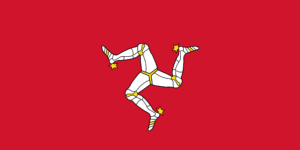The Isle of Man is located in the Irish Sea between Ireland and England. It has a long history of settlement, dating back to 6500 BC. go back. From the 4th century onwards, the Manx language was influenced by Gaelic. Norwegians then began to settle the island in the 9th century.
The island has been part of Scotland and England for many years. It is now considered dependent on the British royal family, but is not part of the United Kingdom or the European Union. However, the British government remains responsible for national defense and foreign policy.
| Capital | Douglas |
| Population | 84,741 (Source: 2023 worldometer) |
| Major Cities | Douglas (capital), Castletown, Peel, Ramsey |
| Borders | England, Wales, Scotland, and Northern Ireland |
| Gross Domestic Product (GDP) | $89,970 (2022 wikipedia) |
| Currency | British pound (GBP); note – there is also a Manx pound |

Isle of Man Major Industries: financial services, light manufacturing, tourism
Isle of Man Agricultural Products: cereals, vegetables; cattle, sheep, pigs, poultry
Isle of Man Natural Resources: none
Isle of Man Major Exports: tweeds, herring, processed shellfish, beef, lamb
Isle of Man Major Imports: timber, fertilizers, fish
Total Size of Isle of Man: 572 km² (source: 2022 The world factbook)
Geographical Low Point of Isle of Man: Irish Sea 0 m
Geographical High Point of Isle of Man: Snaefell 621 m
Climate of Isle of Man: Temperate; cool summers and mild winters; overcast about one-third of the time
General Terrain of Isle of Man: hills in north and south bisected by central valley
World Region or Continent of Isle of Man: Europe
Geographical Coordinates: 54 15 N, 4 30 W
Isle of Man Government Type: parliamentary democracy
Isle of Man Nationality: Manxman (men), Manxwoman (women)
Isle of Man National Holiday: Tynwald Day, 5 July
Isle of Man Independence: none (British crown dependency)
Isle of Man National Symbol: triskelion (a motif of three legs)
Isle of Man National Anthem or Song: Arrane Ashoonagh dy Vannin (O Land of Our Birth)
Isle of Man Languages Spoken: English Manx Gaelic
Isle of Man Religions: Anglican, Roman Catholic, Methodist, Baptist, Presbyterian, Society of Friends
The Manx cat is a breed of domestic cat known for its distinctive tailless appearance. The Manx cat is believed to have originated on the Isle of Man, where it has been known for centuries.
The Isle of Man was designated a UNESCO Biosphere Reserve in 2016 in recognition of the island’s excellent natural environment and sustainable development practices.
The Isle of Man is a tax haven and has no wealth tax, inheritance tax or capital gains tax.
The Isle of Man is a British royal dominion in the Irish Sea between England, Scotland and Northern Ireland.
The Isle of Man has a native breed of sheep called the Roatan Sheep.
Four, sometimes six, horns are part of the breed’s distinctive appearance and have made it famous. Roatan sheep have been inhabiting the island for hundreds of years and have historically provided large amounts of wool and meat to the local population. Despite its small size, the Isle of Man is relatively sparsely populated, with about 40% of the island uninhabited. Most of the islanders live in coastal towns and villages.
The island’s national anthem, “O Land of Our Birth,” is sung at official functions and ceremonies.
The name of the island comes from the Celtic sea god Manannan.
The island is a popular filming location and has been featured in numerous movies and TV shows, including Waking Ned Divine and Game of Thrones.
The largest working water wheel in the world is the Laxie Wheel, also known as Lady Isabella, located on the Isle of Man. This water wheel was built in 1854 to pump water from the deepest lead and zinc mines in the area. The Luxie wheel is 22 meters in diameter and weighs over 160 tons.
The Isle of Man has a total area of 221 square miles, but is only 53 miles long and 13 miles wide.
The island has its own legal structure, modeled after English common law, with Norse and Celtic legal elements.
There is no citizenship on the Isle of Man. However, Isle of Man residents are eligible for British citizenship and can apply for either a British Isle of Man passport or a full UK passport.
The Isle of Man is home to many famous musicians and composers, including folklorist Mela Royle and composer and conductor Sir George Martin.
Around 8000 BC The end of the Ice Age and rising sea levels separated the island from its neighbors. Before 6500 BC people came across the sea to settle there.
Many famous literary works such as The Wicker Man and The Chronicles of Narnia are inspired by the Isle of Man’s rich literary tradition.
Manx skipper is a traditional smoked herring dish still made on the Isle of Man and known around the world. T

